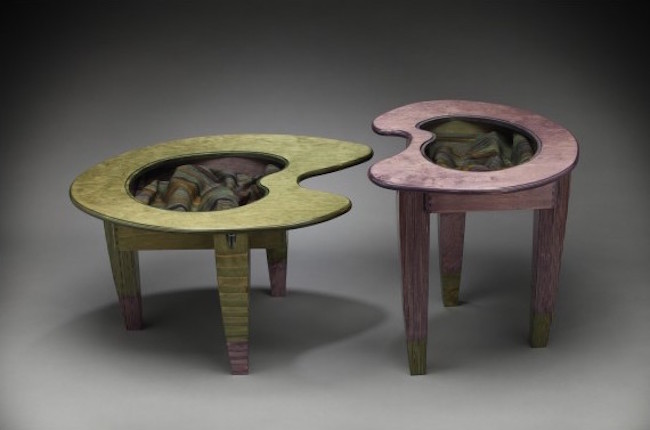Even if you work with a bookkeeper and accountant, as I do, there’s still much work to be done this time of year.
Every year I learn something new at tax time that I wish I had known in advance – insights that would have made the filing process much easier.
These three actions are a compilation of what I’ve learned from my experiences and those of my clients, which should eliminate some of the crazies around tax time.

1. Take charge of your business finances.
Don’t rely on a spouse to take care of your business finances. You, as CEO and CFO of your art career, need to know how to manage the money. You must take 100% responsibility for your future. [Tweet “Be the CEO and CFO of your art biz: take charge of your finances @abstanfield http://artbizsuccess.com/tax-time-crazies.html”]
As sad as it is, I’ve heard many stories about people being duped out of their life savings by spouses who made poor financial decisions. These weren’t features in the paper or characters in a television exposé. These were artists and clients.
At the same time, if someone besides you pays your household bills, get a grip on what your expenses are: garbage removal, newspaper, electricity, cable, Internet, phone, water, and everything else. You want to know exactly what it would cost to continue living in the manner to which you are accustomed and do your part to eliminate unnecessary expenses.
You’re probably thinking: How is all of this work “simple”? Wouldn’t it be easier if someone else did it? The simplicity is accepting the truth that you are in charge. It’s up to you to step into this role and start making informed decisions that eliminate the possibility of any future surprises (crazies).
2. Separate your business from your personal life.
If you haven’t already done so, apply for an Employer Identification Number (EIN). Also known as a Federal Tax Identification Number, the EIN isn’t mandatory unless you are incorporated or in a partnership, but it comes in handy.

Even if you never hire any employees, the EIN can be used in place of your Social Security Number as a sole proprietor. That means you can give your EIN to anyone who pays you for services (such as teaching) instead of your SSN. This adds a layer of protection from identity theft.
Requesting an EIN is easy and free using form SS-4 from the IRS.
Use a business credit card and business checking account to clearly delineate personal from business transactions. The IRS wants to make sure you are running a legitimate business, and mixing records makes you look more like a hobbyist.
Bonus: separating your business from your personal life will simplify the complex task of bookkeeping like you can’t yet imagine.
Things might seem rosy now, but you need to safeguard your future.
A client once shared with me the heartbreaking story of how her deceased husband’s grown children fought with her after his death. She paid dearly in this battle (financially and emotionally) because she had intermixed her personal and business finances.
She told me her story so that I could do my part to see that other artists didn’t do as she had done.
3. Make bookkeeping part of your routine.
As tax deadlines draw closer each year, have you ever tried to reconstruct something that happened a year ago? I know I have, and it’s torture.
The longer you wait, the more likely you are to forget details of a financial transaction. You’ll spend two or three times as long to figure out what should have been a quick entry in your records.

Set aside a regular time every month that you spend with your financial records. You might:
- Input income and expenses into your financial software, and then file receipts
- Send invoices, receipts, and statements to customers/clients/collectors
- Reconcile accounts
- Review checking, savings, and retirement accounts
- Pay credit card balances
- Reimburse yourself for any out-of-pocket business expenses
- Note sales taxes owed (pay sales taxes, if required, each month or quarter)
- Review profit & loss (P&L) statement, as well as sales totals and accounts receivable
During this same time, you might also review your itemized deductions to see that they are properly recorded:
- Track your mileage
- Verify charitable contributions
- Record health care expenses
Next time April 15 rolls around you’ll be sitting pretty because you did most of the work throughout the year. It’s a simple solution to avoid the crazies.
Your Turn
How do you simplify tax time?



15 thoughts on “3 Simple Actions To Avoid The Tax Time Crazies”
Yay! I can relate to all of what you’ve said and I’m happy to report that this is the first year that I’m not really doing anything around tax time (except for writing a check for my quarterly tax payment) because I have a system in place!
Good work, Helen.
Getting an EIN for identity protection is a great idea!
However, I don’t agree completely about having both a personal and business bank account. In order to supplement my art income, and have a steady income during lean cycles in sales, I do some bookkeeping, so I understand why you suggest this. I used to have separate accounts, until the banking fiasco several years back, when banks started charging outrageous fees, treating their customers more like income generators than clients. Fees range from ‘excess deposit’ fees, paper statement fees, to having to keep a minimum balance in order to avoid monthly service fees. One bookkeeping client’s bank requires a balance of $6000! Often business accounts are charged at a higher rate too. Modern bookkeeping software can separate out business from personal income and expenses easily. It takes me and hour to pull together my annual tax info, and that includes adding up my cash receipts, one task which I put off until tax time.
I too, keep only one checking, savings & credit card for personal & business as a sole proprietor. The Quickbooks program makes it very easy to separate. I did, however, get an EIN & it wasn’t for identity protection – that’s a great idea, thanks!
Lisa: I strongly urge you to reconsider and separate them.
If people are running into high bank fees, they should shop around, and consider credit unions. I currently use a local credit union. I often have pretty low balances and I’m not charged any fees for my business account, and my personal/household account is fee-free because I have a small recurring direct deposit (from child support) set up which was one of the ways to qualify for a no-fee personal account. Each bank/CU is different, but this goes to show that it is possible to find good low-fee or no-fee accounts. The price one might pay later for intermixing biz/personal accounts could far exceed the fees saved! (I have heard the same advice from many professionals, and encourage my fellow artists to heed it)
Thank you for sharing this, Jennifer. I agree wholeheartedly. There is no reason to mix your business in with your personal. Shop around.
I just started using The Intuit app called Self Employed. It’s great and if you also have it on your smartphone, everytime you use your debit card or make a deposit it alerts your phone and you can click “business’ or “pleasure” and it will file in the correct category.
You can also take a photo of a receipt ant it files it. It also helps you to see all of your business expenses and income so you can just print that out and give to your accountant, It’s made by the Turbo Tax people so you can do your own taxes if you want. Very user friendly.
That’s great. But I still think you will benefit from separate accounts if you intend to be in it for the long haul.
I have a separate business checking account and visa but sometimes I pay for household things with my income. It’s usually vacation or clothes for myself or the kids, things outside the normal monthly household account. What’s the best way of doing this? I usually mark the transaction as personal, so that when I do end-of-year tally, I can take out everything from that category to see biz results.
Thanks!
Caroline: I would ask your accountant. It will depend based on your business structure.
I like to keep record keeping simple. Because I am a sole proprietor, I file schedule C. I set up my ledger to make it easy for me to do my calculations for the appropriate deduction categories.
I must have followed through well, last year. I finished my taxes in early March.
Patricia: As you grow, you will want those separate accounts. You will get there.
I send my first newsletter for potential art collectors about a new oil painting that i am work on it, in the end of my newsletter i said ” If you are interested in more details ( i mean size, price, etc …) you are more than welcome to contact me on that e-mail ” and i type it , Do you think that is the best action i can do ? if no, so what is better than that ?
Marwan: I’d put all of those details in the newsletter. Don’t make them contact you.